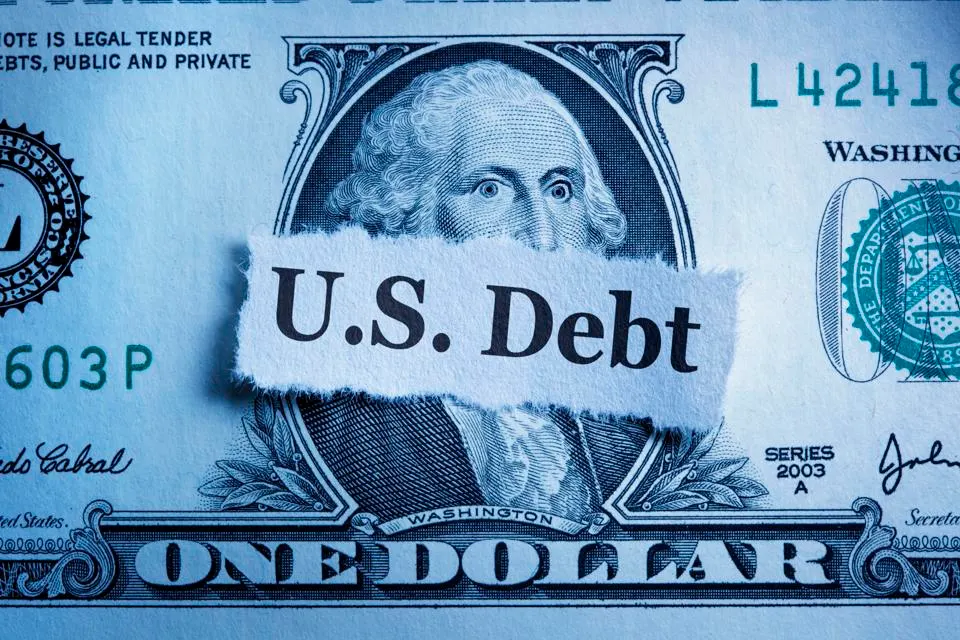US Debt Crisis Continues to Grow – $680 Million Added Since June
08.09.2024 15:00 1 min. read Alexander Stefanov
The US national debt has surged by more than $680 billion in just three months, climbing from approximately $34.6 trillion on June 3rd to around $35.3 trillion by September 3rd.
This increase follows shortly after the national debt surpassed the $35 trillion threshold. Fitch Ratings has expressed concern about the growing debt and ongoing deficits.
Despite maintaining a stable “AA+” rating for the US, Fitch highlights the country’s high per capita income, its status as the world’s largest economy, and its vibrant business environment. However, the agency does not see an upgrade to a “AAA” rating due to persistent fiscal challenges.
Fitch points out that the US faces high fiscal deficits, a significant interest burden, and elevated government debt, all of which exceed the typical metrics for an “AA” rating. The report criticizes the government’s inability to address these fiscal issues effectively, including managing large deficits and increasing spending due to an aging population.
While the US benefits from the dollar’s status as the global reserve currency, Fitch warns that continued reliance on debt could undermine confidence in both the US and its currency. The risk of economic and confidence shocks increases with rising public debt.
-
1
Billionaire Slams Meme Stock Hype and Sounds Alarm on U.S. Fiscal Health
15.06.2025 18:00 2 min. read -
2
Robert Kiyosaki Predicts 2025 “Super-Crash,” Urges Hoarding Gold, Silver, and Bitcoin
23.06.2025 13:31 2 min. read -
3
Nassim Taleb Says Global Trust Is Shifting from the Dollar to Gold
22.06.2025 17:00 1 min. read -
4
Billionaire Investor Sees Dollar Crash If Key Support Breaks
18.06.2025 15:00 1 min. read -
5
Geopolitical Shockwaves Hit Ethereum Hard While Bitcoin Stays Resilient
22.06.2025 16:21 1 min. read
Robert Kiyosaki Predicts When The Price of Silver Will Explode
Robert Kiyosaki, author of Rich Dad Poor Dad, has issued a bold prediction on silver, calling it the “best asymmetric buy” currently available.
U.S. PCE Inflation Rises for First Time Since February, Fed Rate Cut Likely Delayed
Fresh data on Personal Consumption Expenditures (PCE) — the Federal Reserve’s preferred inflation gauge — shows inflation ticked higher in May, potentially delaying the long-awaited Fed rate cut into September or later.
Trump Targets Powell as Fed Holds Rates: Who Could Replace Him?
Federal Reserve Chair Jerome Powell is once again under fire, this time facing renewed criticism from Donald Trump over the Fed’s decision to hold interest rates steady in June.
U.S. National Debt Surge Could Trigger a Major Crisis, Says Ray Dalio
Billionaire investor Ray Dalio has sounded the alarm over America’s soaring national debt, warning of a looming economic crisis if no action is taken.
-
1
Billionaire Slams Meme Stock Hype and Sounds Alarm on U.S. Fiscal Health
15.06.2025 18:00 2 min. read -
2
Robert Kiyosaki Predicts 2025 “Super-Crash,” Urges Hoarding Gold, Silver, and Bitcoin
23.06.2025 13:31 2 min. read -
3
Nassim Taleb Says Global Trust Is Shifting from the Dollar to Gold
22.06.2025 17:00 1 min. read -
4
Billionaire Investor Sees Dollar Crash If Key Support Breaks
18.06.2025 15:00 1 min. read -
5
Geopolitical Shockwaves Hit Ethereum Hard While Bitcoin Stays Resilient
22.06.2025 16:21 1 min. read


